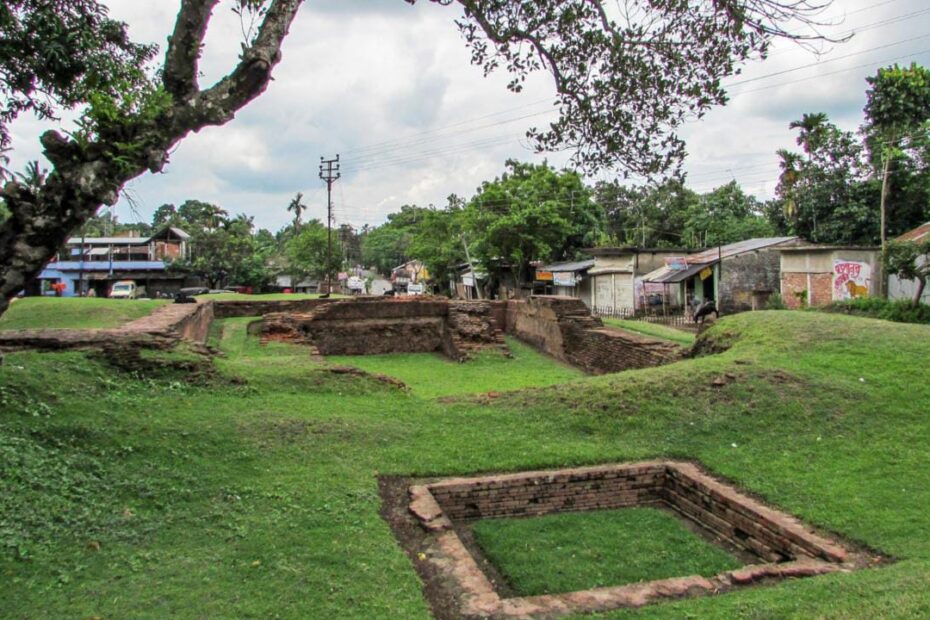Chandraketugarh is one of the most rumored locations in the historical realm due to its antiquity and mystery.
The 2,300-year-old Chandraketugarh site is located in the district of North 24 Paragans, West Bengal not far from the little village of Berachampa.
It is home to some of the most incredible terracotta sculptures.
ADVERTISEMENT
This is currently a desolate mound that has fallen into disrepair after serving as a key coastal hub for international trade.
A brick edifice was found next to the nearly dried-up Vidyadhari River during normal road construction work in the early 1900s.
It was recognized as the Terracotta Brick Foundation of Chandraketugarh at Khana Mihirer Dhipi.
As the name suggests “Chandraketugarh”, the region was ruled by King Chandraketu. He was thought to be one of the greatest rulers of the Gangetic delta region.
In this article, you will get to know the following points about Chnadraketugarh,
Let’s see each of these points in detail.
How to reach Chandraketugarh
The actual location of the Chandraketugarh Fort, also known as Khana-Mihirer Dhipi, is on the other side of the intersection of the crossroads of Berachampa.
To reach Chandraketugrah firstly you have to reach Berachampa.
The historic landmark lies within fifty meters of the Haroa Road and Taki Road crossing at Berachampa.
The Chandraketugarh fort lies 2 kilometers opposite the Khana Mihirer Dhipi.
Taking a bus, which is conveniently accessible from Esplanade, is the best option to visit Chandraketugarh.
ADVERTISEMENT
You must get down in Berachampa, and it is very easy to go to Chandraketugarh from there.
If someone finds the bus services uncomfortable, then they can alternatively take a train, that is the morning Basirhat local.
You are free to use an auto rickshaw or any mode of transportation after you arrive at Harua rail station.
It takes over 15 minutes to travel to Berachampa.
Main attractions of Chandraketugarh
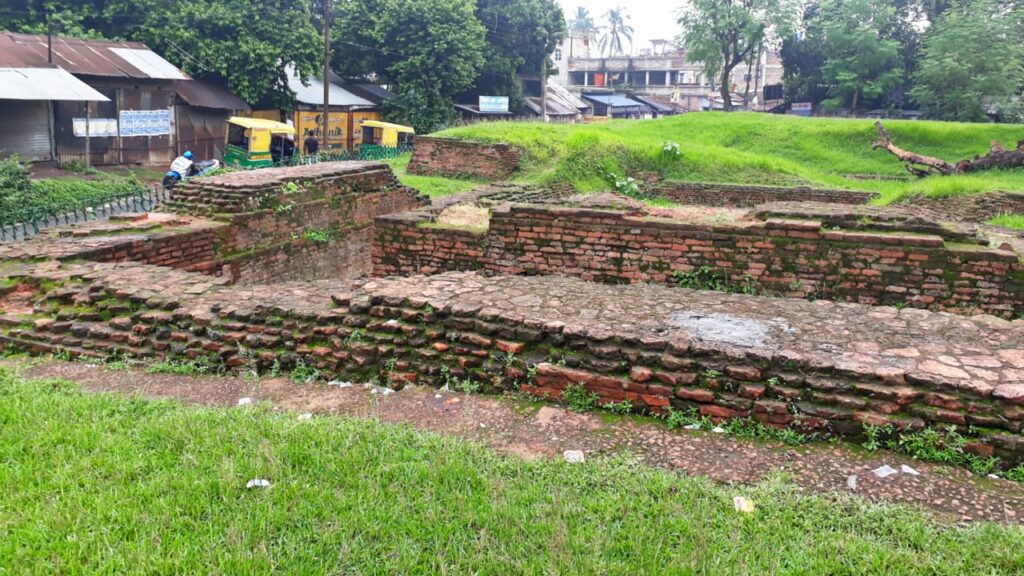
The main attractions here are the ruins of an ancient temple dedicated to prophesiers Khana and Mihir.
The Chandraketugarh Fort is also a major highlight here.
The site which includes both these important structures is called “Khanamihirer Dhipi.”
The Greeks named this region “Gangaridai” and have been mentioned in several Graeco-Roman texts as well.
Discovery of Chandraketugarh
A local physician named Tarak Nath Ghosh discovered this ancient structure.
Ghosh also found some plaques and earthenware during a careful study around 1905-1906.
Later he informed this news to the Archeological Survey of India.
However, after additional investigation, Longhurst, an official of the Archeological Survey of India, concluded that “the ruins were of little or no importance.
Rakhaldas Banerji, the archaeologist who found the Mohenjo-Daro ruins, visited Chandraketugarh two years later and discovered a profusion of terracotta artifacts.
ADVERTISEMENT
After a decade-long excavation in 1956, they discovered that Chandraketugarh had been a center of civilization as early as the 4th century BCE!
The location had been occupied continuously from the pre-Mauryan era until the Sunga Kushana period, following the Gupta period, and the Pala-Sena dynasties in the 12th century CE.
Ptolemy, a Greek geographer, mentions Chandra KetuGarh as the region of Gangaridai in his renowned Geographia (c. 150 CE).
Additionally, the site was part of a much larger network of metal trade and had connections to Rome and other ancient civilizations, if not directly then indirectly.
The numerous coins found here reveal this significant information.
Things found during excavation of Chandraketugarh
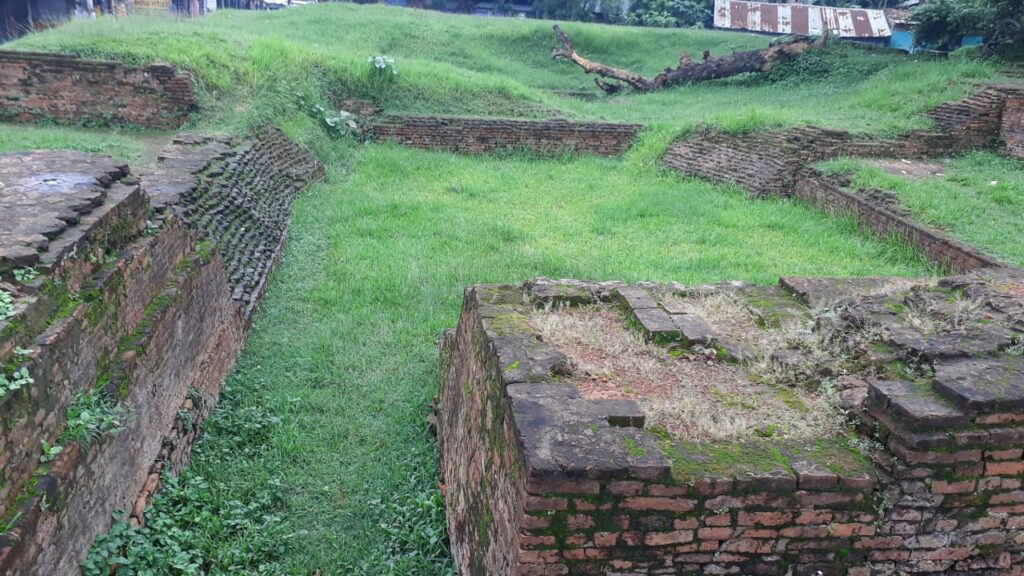
In 1957 excavation was carried out on a mound that revealed temple-like structures.
The abundance of terracotta artifacts found there, including seals, ceramics, toys, figurines, and plaques stands out as the prime discoveries in this ancient architectural ruin.
The pottery discovered was of Sunga Kushana Style.
The majority of the artifacts were made using clay due to the abundance of the alluvial soil of the Bengal Belt.
The hundreds of items discovered here exhibit an unmatched level of craftsmanship’s accuracy and beauty.
Because clay was a common medium used by regular people to express themselves, we can learn more about the lives and times of those who once lived here.
Various women figurines were also discovered as a part of the excavation.
ADVERTISEMENT
The women’s figurines wore ornate headpieces, knob earrings, heavy bangles, and neckpieces.
They are covered in a very thin material cloth which is recognized as the renowned Dhaka muslin.
Along with Yakshis and animal sculptures, there are also idols of numerous deities that were found in this location.
The most surprising part of the finds is the sensual art on the plaques, which is 1,000 years older than Khajuraho in Madhya Pradesh.
Other materials besides terracotta include articles made of ivory.
Another discovery was made in Chandraketugarh in 2000 through ASI archeological dig.
They discovered the remains of a rectangular fort with vertical walls surrounding it and rising to a height of 30 feet.
The fort is believed to have existed between the Maurya and Gupta eras.
The crew also discovered temple structure remnants, including columns and Toranas.
The temples depict that these were of Sarvatobhadra types.
This reflects the mythology that is connected to the area.
Even though Bengal’s medieval literature does not mention anything about the king Chandraketu, there is much evidence in support of it.
Some believe that Chandragupta Maurya was the other name of Chandraketu while others mention that Chandraketu was the same individual identified in Greek reports as” Sandrocottus”
Conditions to enter Chandraketugarh
No tickets are required to enter Chandraketugarh but you have to pre-register your name before visiting this site.
The walking paths are well marked and you can stroll along the sites with ease.
You are not allowed to climb on top of the excavated structures and you are permitted to walk only on the designated pathway.
ADVERTISEMENT
Here you will get to see huge foundation sections within the excavated area which is only comprised of terracotta bricks.
No visual figures can be seen here, but the ones excavated from this site have been shifted to the nearby Chandraketugarh Museum.
This is one of the offbeat destinations in North 24 Parganas that you can visit.
Once you go there you can discover many new facts about the influence of trade and history in Bengal during the Mauryan era.
This destination is really fascinating and indeed a favorite place for history buffs.
Cover Pic Credits: Suman Kumar Giri, CC BY-SA 4.0, via Wikimedia Commons
Other places to visit in West Bengal
- Ramdhura (Kalimpong) – 5 Points You Must Know About
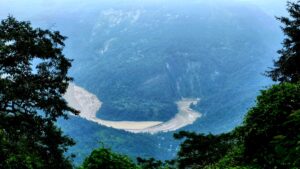
- Daragaon, Burmaik (Kalimpong) – 5 Points You Must Know About
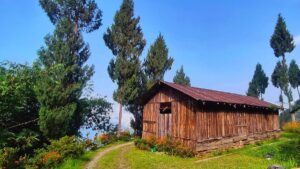
- Ghurni – Exploring Krishnanagar’s Hidden Gem And Its Clay Dolls

- Mim Tea Garden (Darjeeling) – 5 Points You Must Know About
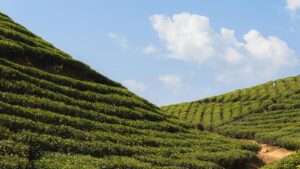
- Bandel Church (Hooghly) | The Basilica of the Holy Rosary
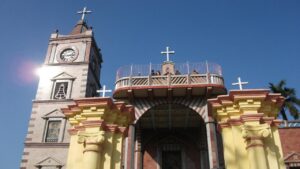
- Bethuadahari Wildlife Sanctuary (West Bengal) – 5 Things To Know

Disclaimer: Some of the links provided in the article may contain affiliate links. This means when you book or buy something using these links, you help support the website at no extra cost.

